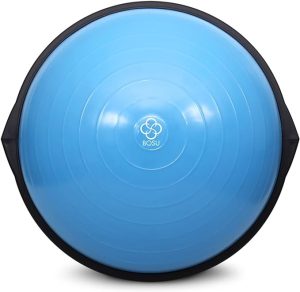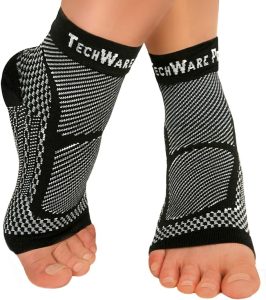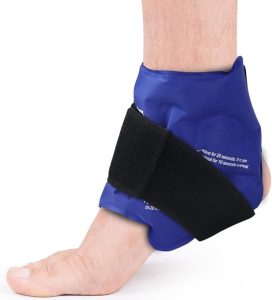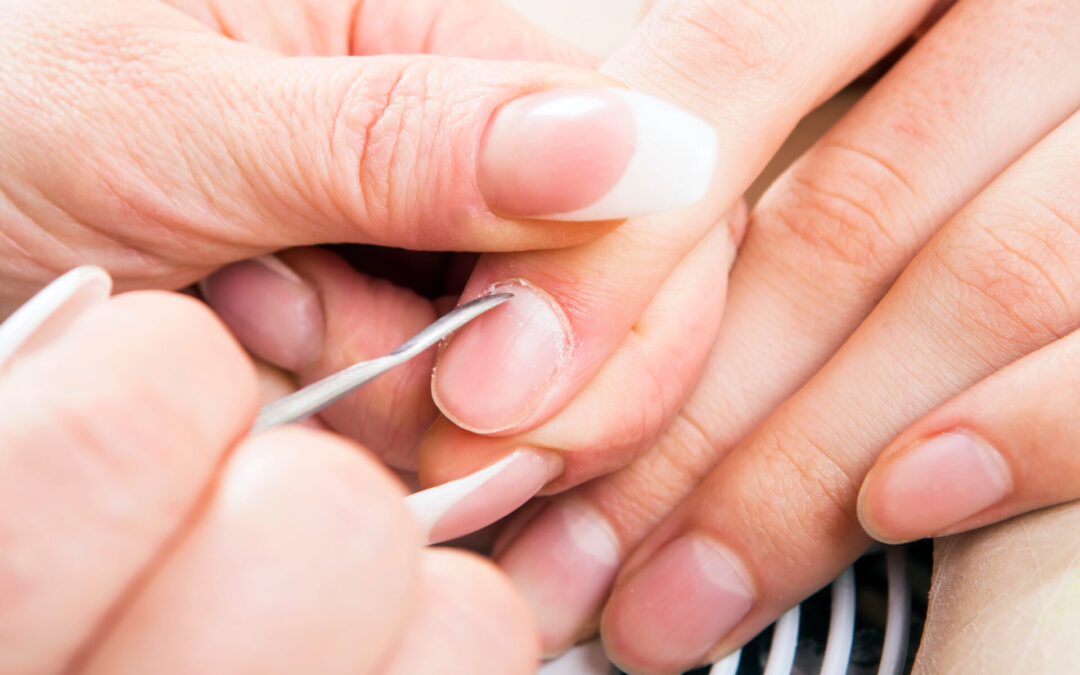Running is one of the most popular ways of getting cardiovascular exercise. Studies show habitual running has a positive effect on body mass, body fat, resting heart rate, VO2 max, triglycerides and HDL cholesterol, and more.
Nothing kills the vibe from that runner’s high, however, more than an aching ankle after running. Ankle pain is among the most prevalent post-run pains and can vary from nagging to downright debilitating.
What causes ankle pain after running and what can you do about it? Read on to find out!
Common Causes of Ankle Pain After Running
There are many different causes of ankle pain.
Sprained Ankle
One of the most common causes of ankle pain while running or after running is a sprained ankle. This can happen when you run on uneven surfaces, which is common if you’re a trail runner, land awkwardly during your stride, or change direction with too much intensity as you may do during sports, and the ligaments that support the ankle are stretched too far or completely torn.
Overuse or Achilles Tendinitis
Often in sports and training, we’re told to “push through the pain.” We’re all for pushing boundaries, but there is a point at which doing so is unsafe and could cause damage to your body.
That’s why many coaches teach and abide by The 10-Percent Rule, which dictates that you should never ramp up your weekly mileage count by more than 10% at a time; because if you show up to your first marathon and you’ve only ever tackled a 5K, you’re likely to be in a world of hurt the next day or next few weeks even.
Overusing the ankle joint leads to an inflammation of the tendons around the ankle, which causes pain and discomfort. Improper footwear may contribute to or cause tendinitis as well.
Ankle Impingement
Ankle impingement occurs when there is compression of soft tissues, such as tendons or ligaments, between the bones of the ankle joint. Repetitive activities like running may lead to irritation and compression, contributing to ankle impingement. Insufficient ankle strength and mobility increases your risk too.
Stress Fractures
A stress fracture is essentially a microscopic crack in the bone, which causes pain during and after running in most cases. Overtraining, running on hard surfaces, or excessive increases in weekly mileage without practicing proper recovery all can contribute to stress fractures.
Flat Feet or Overpronation
Flat feet or overpronation (excessive inward rolling of the foot) can seriously mess with your ankle alignment, putting strain on the ankle and leading to pain. Genetics play some role here, but wearing the right footwear works wonders for helping an athlete maintain proper alignment during running and other training activities.
Arthritis
Our bodies wear out over time, unfortunately, even if we take great care of them by eating right, exercising regularly, and getting plenty of sleep. Wear and tear, inflammatory conditions, and previous injuries all may contribute to ankle arthritis categorized by pain, stiffness, and swelling at the ankle joint.
If Your Ankle Hurts After Running, Try Using These to Strengthen Your Ankles, or to Relieve or Prevent Pain
1. Bosu Ball
2. TechWare Pro Ankle Brace Compression Sleeve
3. NEWGO Ankle Heat and Ice Pack
What to do if You Have Sore Ankles After Running
Your plan for managing ankle pain will vary significantly depending on the severity of the pain.
For mild pain, the RICE Method is often effective:
- Rest: First and foremost, stop running! Minimize activities that have you on your feet and, if you absolutely must continue exercising as your ankles recuperate, choose low impact exercises like cycling, swimming, or light weight training instead.
- Ice: Applying an ice pack for about 15 to 20 minutes every 2 or 3 hours will help reduce swelling and inflammation and alleviate pain.
- Compression: Using a compression bandage or brace provides support to the ankle while improving circulation to reduce swelling.
- Elevation: Raising the ankle in the air helps drain fluids and reduce swelling, which also should provide some relief.
If the pain is excruciating, constant, or debilitating, you should seek medical attention or consult a healthcare professional to receive a proper diagnosis and treatment plan tailored specifically to your condition.
Ankle Pain Prevention
As they say, “An ounce of prevention is worth a pound of cure.”
Taking measures to minimize your risk of ankle injury and/or developing a painful ankle condition altogether is often the best approach for enjoying a healthy, pain-free lifestyle.
Begin each training session, whether you’re running or engaging in another sort of physical activity, by properly warming up. Incorporate ankle circles, toe taps, and calf raises to improve ankle flexibility and improve blood flow.
Warming up is important, but a proper cool-down is just as essential. Stretching at the end of the workout further enhances the elasticity of your muscles, making them more resilient to the stress of your workout and less likely to experience trauma during the recovery.
It’s not easy giving yourself time to warm-up and cool-down properly, especially in today’s fast-paced society where we often need to get in and out of the gym quickly, but studies show that a proper warm-up may significantly decrease your risk of injury.
Choosing the right footwear is another essential aspect of ankle pain prevention. Your running shoes should provide support and cushioning to further mitigate the risk of injury. You may not receive much guidance at a garden variety sportswear retailer, but many modern shoe stores that specialize in athletic footwear feature knowledgeable staff that can observe your gait and make informed recommendations based on how you walk and run.
How to Strengthen Your Ankle Muscles
Pairing your running regimen with some strength and stability exercises may be beneficial too. Here are a few to help strengthen the lower body muscle groups, improve joint stability, and reduce your overall risk of injury:
- Calf Raises
- Toe Taps
- Ankle Circles
- Resistance Band Dorsiflexion
- Resistance Band Plantar Flexion
- Heel-to-Toe Walks
- Single-Leg Stands
Performing regular weightlifting exercises, like shoulder presses, biceps curls, triceps overhead extensions, goblet squats, and more, while standing on a Bosu ball may help improve ankle strength and stability as well. Be sure to use light weights when first starting out with instability training like this, however, as the unstable surface may really throw you for a loop!
Plyometric exercises may also be beneficial for improving ankle stability, but some individuals may be medically contraindicated from performing them if they have a pre-existing condition that puts them at risk. It’s always prudent to consult your doctor before adding unfamiliar exercises into your workout routine.
Ligament Issues that Could Cause Ankle Pain After Running
The ankle joint is a complex thing, consisting of various muscles, tendons, ligaments, and bones. All of these work in unison to perform everyday tasks like walking, standing, jogging, running, and more.
Ligament-related issues may complicate and, in some cases, seriously impede your ability to perform these everyday tasks. The most common ligament issues include:
- Ankle Sprain
- Chronic Ankle Instability
- Anterior Impingement Syndrome
- Posterior Impingement Syndrome
- Syndesmosis Injury (High Ankle Sprain)
Whereas many minor forms of ankle pain may be managed with home treatment and physical therapy, ligament issues may require more intensive care, including rehabilitation, bracing, and, in severe cases, surgical intervention.
If your post-run ankle pain is persistent, extreme, or accompanied by swelling, instability, or a feeling of giving way, it’s crucial to seek medical attention immediately.
If You Have Ankle Pain Before You Run, Then Don’t Run!
“Pushing through the pain” is never a good idea when it comes to ankle pain. Doing so often only exacerbates existing injuries or contributes to new ones that will bring with them a whole new host of unwanted symptoms. Rest, first and foremost, is the best thing if you’re regularly experiencing sore ankles after running.
If rest is absolutely out of the question, try cycling, swimming, rowing, using an elliptical, water aerobics, or light weight lifting instead. These activities will still get you a workout while minimizing or completely eliminating stress to the ankles.
Difference Between Outside and Inside Ankle Pain
The location of ankle pain, whether it’s on the outside (lateral) or inside (medial) of the ankle, provides clues about the possible underlying causes.
Outside, or lateral, ankle pain may indicate an issue with the anterior talofibular ligament (ATFL) or peroneal tendons. Inside, or medial, ankle pain, on the other hand, often concerns the posterior tibial tendon.
Whereas outside ankle pain most often has to do with twisting the ankle, rolling the foot, overuse, or repetitive stress, inside ankle pain may indicate an issue with your gait or how you bear weight in your feet.
What to Do if You’re Experiencing Inside Ankle Pain From Running
Consulting a doctor and practicing the RICE Method are great go-tos for general ankle pain, regardless of its location, but wearing the right shoe may work wonders for your inner ankle pain from running causes.
Consider working with a fitness professional to identify key characteristics of your gait and stride. This will enlighten you to what type of footwear will provide the best performance and comfort while you’re out on your runs.
The right fit may even reduce or eliminate your medial ankle pain from running, so it’s well worth your while to explore.
What to Do if You’re Experiencing Outside Ankle Pain From Running
Outside ankle pain more often has nothing to do with your gait and footwear. Often, it indicates that you are contributing to or still recovering from an injury related to trauma.
For outside ankle pain, discuss the condition with your doctor, practice the RICE Method, and consider working with a physical therapist to minimize the pain and optimize your recovery.
How Long Does Ankle Pain From Running Last?
Minor ankle injuries may last only a few hours or days, but severe cases of ankle pain, like the ankle pain associated with major injuries and debilitating conditions, may go on for weeks, months, or years even.
That’s why speaking with your doctor or other health professional is critical for identifying any type of ankle pain and helping you develop a plan to alleviate your symptoms and recover fully before further damage is done.
Zoppler is reader supported and may earn affiliate commissions from links on this page. We support and believe in all the products and services we promote and are affiliated with.















